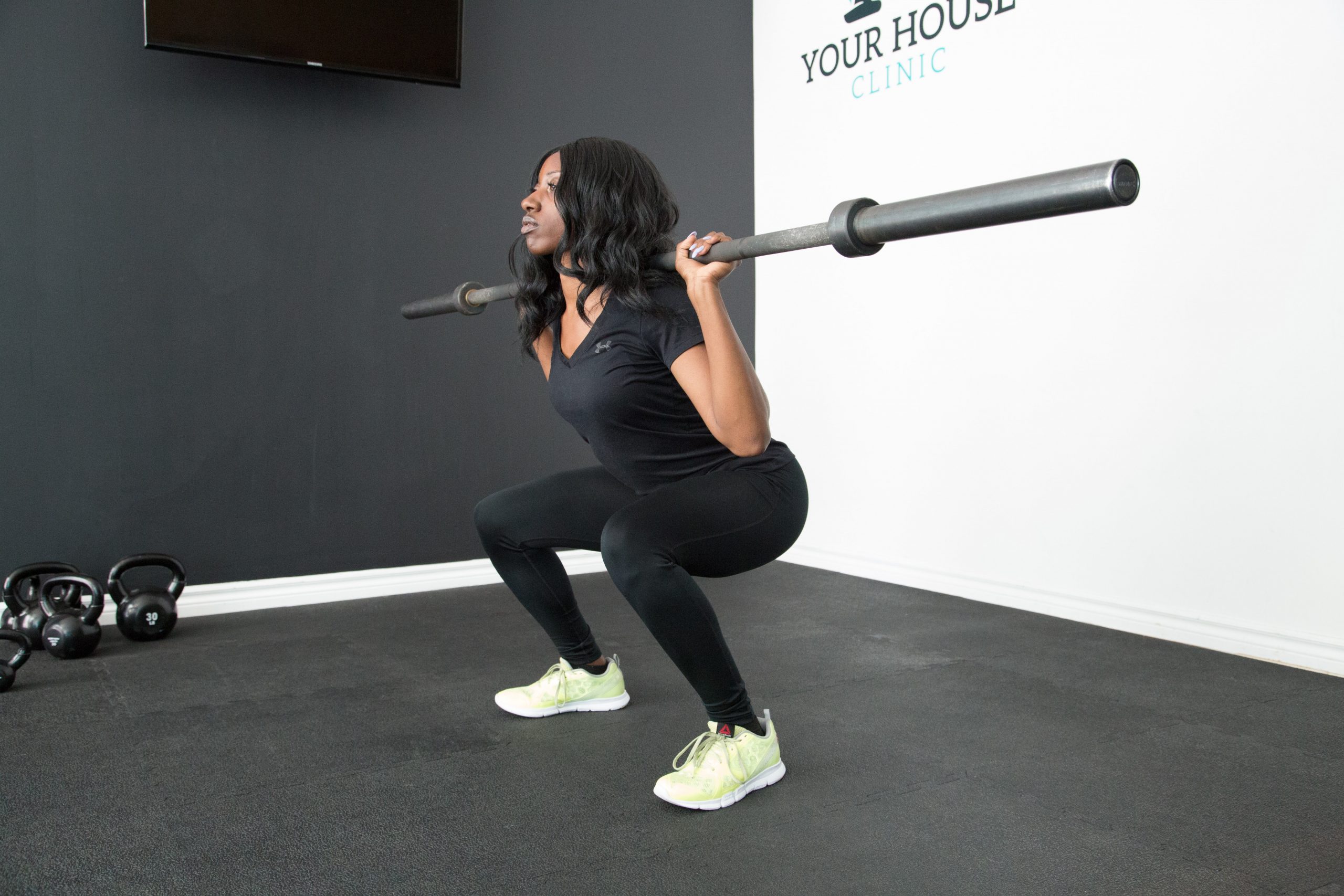Squatting 101
People have a lot of questions about squatting: “What is the best way to squat? What if my knees hurt when I squat?” Squatting is really important because it’s something that we do almost all the time, even without thinking about it. So, here’s a brief post with some basic information I give to people when I’m helping them with a squat.
Find your squat position
Here’s a little drill that you can do to figure out where your knees and hips and feet should be when you get to the bottom of the squat. Get on your back, grab your knees bring your legs and your thighs, up to your chest and look down at your feet and notice the angle of your hips. That form is what you should have when you’re in a full squat.
Set up your feet and hips
Now, let’s discuss how your feet and hips should be set up for the squat. Most people tend to set up their feet a little more narrow than they should be, so set your feet a little wider than you think you should. Make sure that your feet are pointed or rotated out to the side about 10 degrees. That is a more natural position for your feet to be in when you squat with your knees out over your feet. Make sure the weight of your body is felt all the way throughout the bottom of your feet. Try to keep that weight neutral into the feet and you’ll have a little bit better base of support when squatting.
Push your butt backwards
The next part of the squat to focus on is hinging at your hips and pushing your butt back as you go into the squat. When people first are learning how to squat, they think that a squat is just going straight down. As a result, they tend to go just down and bring their knees forward more than their butt goes back. Sometimes I’ll have to teach a patient how to do more of a hip hinge just to get them to feel that rotation at the hips.
When you squat, think about pushing your butt back like you’re pushing it against or towards a wall or into the next room. I tell my patients to push their bottom back as best they can to get down into that squat. If you focus on putting your butt back, that will help you get your butt and your hips where they need to be to do a good squat.
Keep a neutral spine
Keeping a neutral spine is important to execute a good squat. Most people do one of two extremes when they squat: one extreme is dumping fully into extension with back curving too far in like a cows , and the other is dumping fully into flexion, with the spine curving out like a cat’s. You don’t want to do either. There is a in-between: a neutral spine. As you go down into the squat, control where your back is in space; don’t let it dump into cat or cow spine. You actually have to control where it is.
Push your knees out
The last thing to do when squatting is to push your knees out to the side and forward just a little bit. We used to worry a lot about the knees going over toes, but a lot of times that’s just the way people are set up, that their knees do have to go forward a little bit and it’s not really a bad thing. When you go down in the squat, set your feet wide and rotate your toes out to the side. Pretend there’s a band around your knees as you squat and separate your knees apart as if you’re spreading that band out as squat. Do this and you’ll be in a great position at the bottom of the squat. It’s really important for maintaining some hip and back stability, so push those knees apart as you squat.
There is a lot of variability when it comes to squatting and this blog just covers the basics. When you start to add the different types of squats, (Front, Back, Overhead, etc.) then there is some differences in form. Also, people are built really different and this can also change how a squat needs to be done.
If you are someone in Roswell, Alpharetta, or Johns Creek and you do CrossFit, HIIT, or Olympic lifting type workouts we would love to work with you on nailing your squat form. At Mission Move Physical Therapy we pride ourselves on being performance physical therapists who do way more than just Physical Therapy. Please reach out, we would love to talk to you! Call/Text: 678-400-0300
